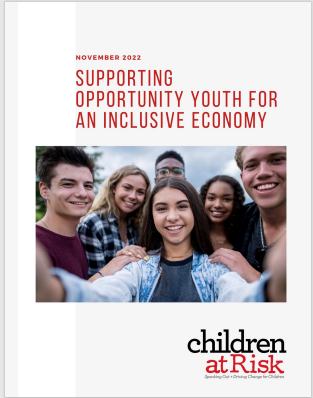Despite a decades-long drop in the opportunity youth population, which decreased from 5.8 million to 4.4 million between 2011 and 2021, the number of opportunity youth rose dramatically during the pandemic to more than 6 million. The term opportunity youth (OY) refers to youth between the ages of 16-24 who are disconnected from the conventional paths of adulthood (e.g. neither in school, nor training, nor in the workforce). This disconnection may stem from various factors – including but not limited to not finishing school, involvement in foster care or juvenile justice system, being a teen parent, drug addiction, or even being thrust into the role of head of household when their former caregivers have suffered a negative economic shock.
The term opportunity youth has been used for the past decade in replacement of “disconnected youth” and is used “as a reflection of the optimism they have for finding a pathway to economic stability, and as a reminder that investing in their futures represents an immense opportunity for employers and the nation. By improving outcomes for this population, businesses and communities have the potential to increase savings for society, improve the quality of talent available to employers, and interrupt a multi-generational cycle of poverty for youth and their families.”
With the recognition of the unrealized potential for opportunity youth, over the past decade, additional resources have been invested into opportunity youth programs to address education and job training needs. This effort is partially driven by a need to provide a talent shortage solution that is being created by the retirement of the Baby Boomers. With these shifting workforce dynamics, opportunities exist to provide significant support to opportunity youth that will not only benefit them but will also contribute to a diverse and well-trained workforce.
This report was made possible by the generous support of Wells Fargo.
More Like This…
High School Students Create App to Record Children’s Experiences from Hurricane Harvey
Quality ECE Can Transform the Future Workforce of Texas
Hurricane Harvey’s Impact Revealed the Unique Needs of Children During a Disaster
“Stop Trafficking Now”
Most Texas Families Cannot Afford Child Care
Early Childhood Stakeholders Urge Texas Leaders to Improve Child Care Quality
In a letter to the Governor, state legislators, and health and human services leaders, 23 organizations and stakeholders in the early childhood field urged for improved childcare quality following a recent Austin American-Statesman investigation into the consequences of lax state policy and oversight of child care.
